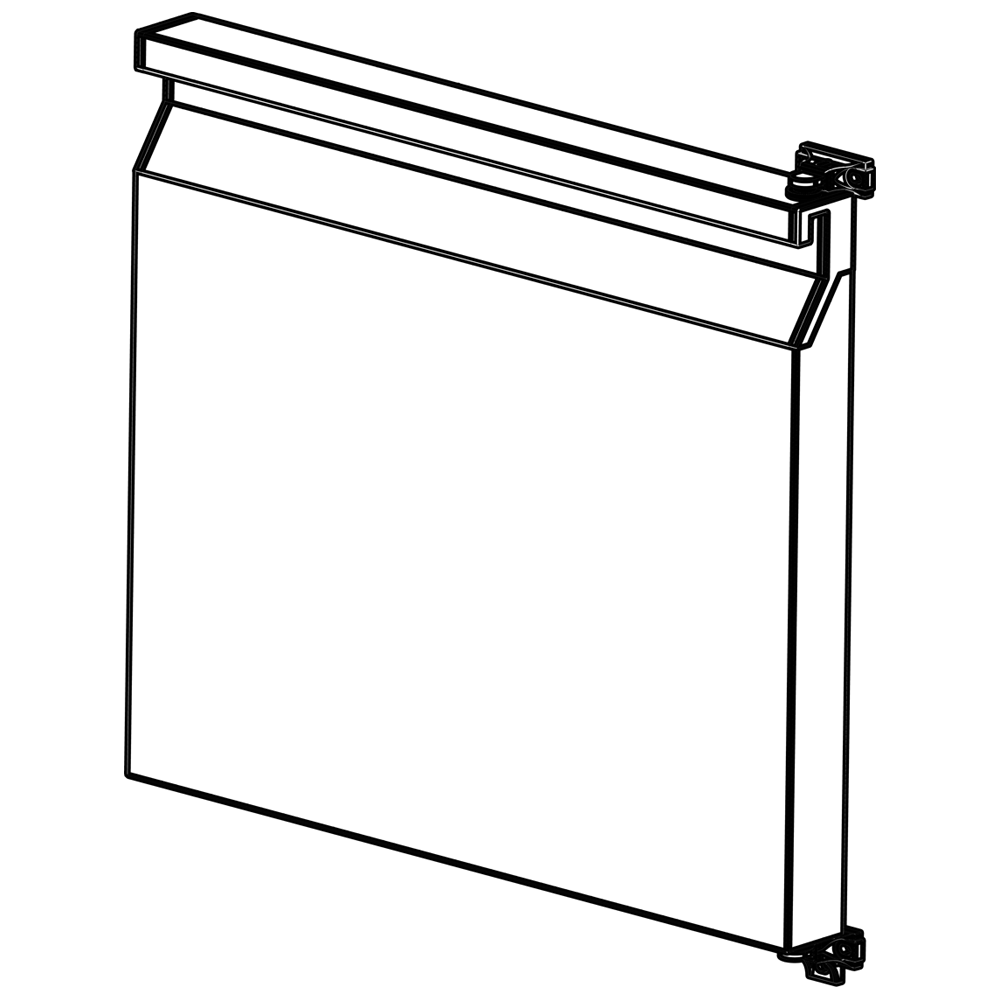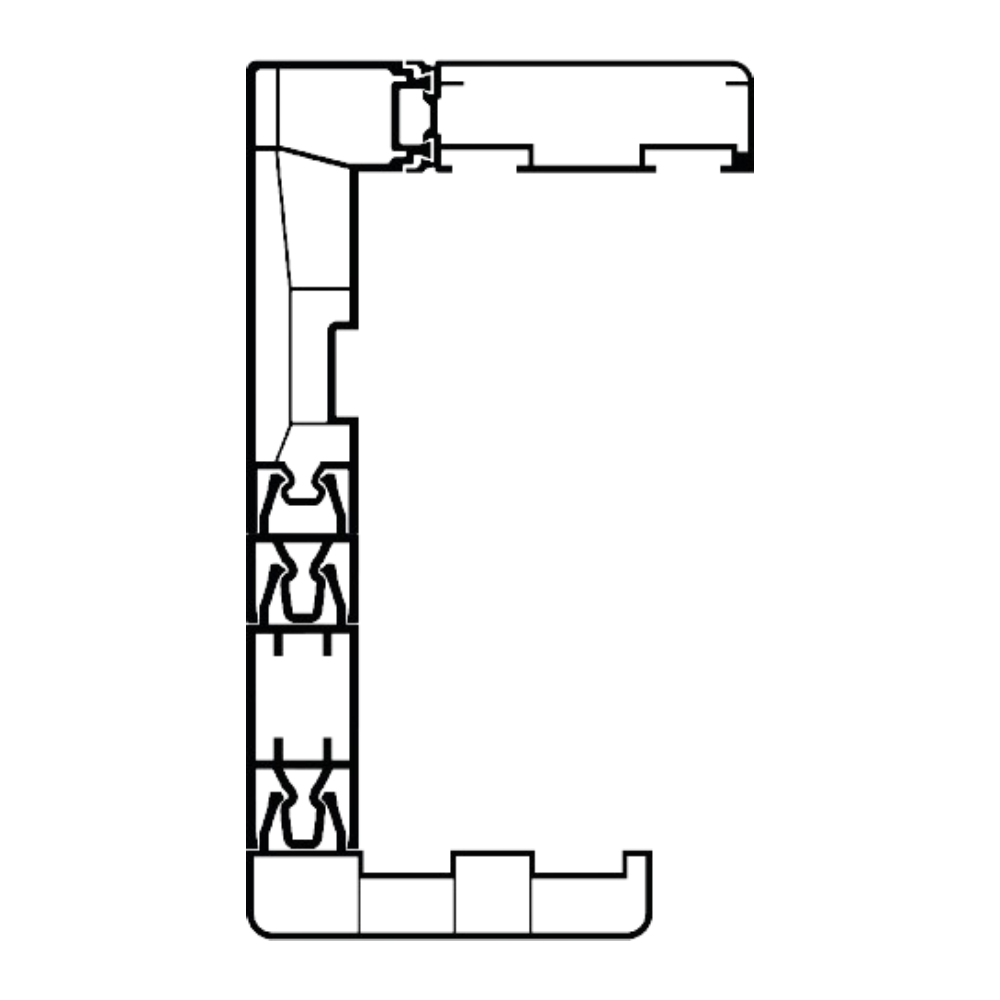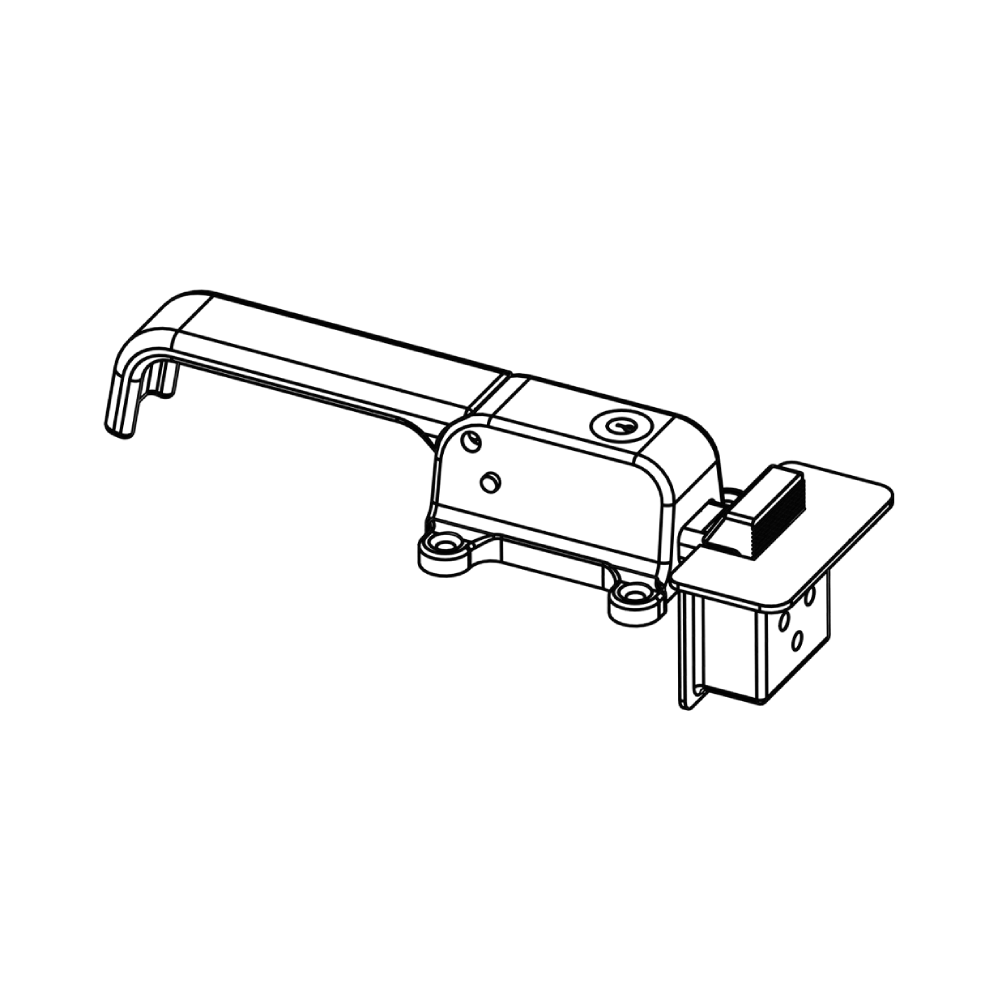Energy-Efficient Door Gaskets: Guide To Reducing Bills And Heat Loss
Table of Contents
- The Ultimate Guide to Energy-Efficient Door Gaskets: A Technical Breakdown for Industrial Facilities
- How Much Can an Industrial Door Gasket Really Save? A Cost-Benefit Analysis
- Compression Gaskets vs. Brush Seals: Which is the Superior Choice for Thermal Efficiency?
- Critical Factors for Selecting the Right Door Gasket to Minimize Heat Loss
- Are Your Warehouse Door Seals Costing You Money? A Guide to Performance Auditing
- What is the R-Value of a Door Gasket? Understanding Thermal Resistance in Industrial Seals
The Ultimate Guide to Energy-Efficient Door Gaskets: A Technical Breakdown for Industrial Facilities
The operational integrity of an industrial facility is critically dependent on maintaining stable internal environments, a challenge where the humble door gasket plays an unexpectedly pivotal role. An effective thermal barrier is not merely about insulation but about creating a continuous seal that prevents costly energy transfer. The science behind this involves understanding heat transfer mechanisms, where inadequate sealing leads to significant energy loss and strains on HVAC systems.
Selecting the appropriate gasket material is a fundamental technical decision. Materials must be evaluated for their compression set resistance, which defines the material's ability to return to its original shape after repeated compression cycles. A gasket with poor recovery will quickly develop gaps, compromising the entire seal. Furthermore, the material must exhibit excellent environmental resistance to factors like extreme temperatures, ozone, UV exposure, and chemical contact to ensure long-term performance.
Beyond material science, the geometric design of the gasket profile is equally important for achieving an optimal seal. Advanced gasket systems from İmamoglu often incorporate dual-seal or magnetic profiles that create a more robust air infiltration barrier. This sophisticated engineering directly combats air leakage, a primary source of energy inefficiency in warehouses and manufacturing plants, by ensuring the gasket conforms perfectly to the door surface even under minor misalignments.
The financial justification for a premium gasket system is clear when calculating the return on investment. The reduction in energy consumption directly lowers operational expenditures, while the decreased load on heating and cooling equipment extends its service life. This contributes directly to a facility's sustainability goals by minimizing its carbon footprint.
For facilities with specific climate control needs, such as cold storage or cleanrooms, the airtight seal provided by a high-performance gasket is non-negotiable. It is the first line of defense against moisture ingress, contamination, and temperature fluctuations. Proper installation is critical; even the best gasket will underperform if not installed with correct compression force and alignment, highlighting the need for professional specification and implementation.
How Much Can an Industrial Door Gasket Really Save? A Cost-Benefit Analysis
The primary function of an industrial door gasket is to establish a robust airtight seal, a critical factor often underestimated in operational budgeting. When a facility lacks proper sealing at doorways, it experiences significant energy loss as conditioned air escapes and unconditioned air infiltrates. This continuous exchange forces HVAC systems to work overtime, leading to exorbitant energy consumption and accelerated equipment wear.
A quantitative cost-benefit analysis reveals substantial savings. By implementing a high-performance gasket system like those from İmamoglu, facilities can reduce their heating and cooling costs by 15% to 30% annually. The return on investment is calculated not just in energy savings but also in enhanced thermal efficiency, which stabilizes internal temperatures for both process control and personnel comfort. This directly impacts the bottom line by lowering utility bills and extending the lifecycle of climate control assets.
Beyond energy, the benefits extend to environmental control. In sensitive environments such as food processing plants, pharmaceuticals, or cleanrooms, preventing particulate, humidity, and pest ingress is paramount. A superior gasket acts as a primary defense, maintaining hygiene standards and reducing product spoilage or contamination risks. This level of protection is a direct contributor to regulatory compliance and product quality assurance.
The mechanical durability of a gasket is defined by its compression set resistance and ability to withstand repeated door cycles. Products engineered with advanced polymers maintain their sealing integrity over thousands of openings and closings, unlike basic foam strips that degrade quickly. This long-term reliability minimizes maintenance downtime and replacement costs, contributing to a lower total cost of ownership.
For product managers specifying components, the acoustic insulation properties of a dense door gasket offer an additional advantage. In manufacturing settings with high noise levels, effective sealing around doors reduces sound transmission, contributing to a safer and more compliant work environment. This secondary benefit can mitigate the need for additional sound-dampening measures.
The initial capital outlay for a premium gasket must be evaluated against the cumulative costs of energy waste, equipment strain, and compromised process integrity. The payback period for a system like İmamoglu's is typically under two years, making it a compelling capital improvement project. The analysis confirms that the gasket is not a simple accessory but a vital component for operational efficiency and cost management.
Compression Gaskets vs. Brush Seals: Which is the Superior Choice for Thermal Efficiency?
The pursuit of optimal thermal efficiency in industrial systems often hinges on the performance of sealing solutions at high-temperature interfaces. The debate between traditional compression gaskets and advanced brush seals is central to achieving effective heat retention and operational reliability.
Compression gaskets, typically fabricated from materials like graphite or ceramic fibers, create a static seal by deforming under load to fill surface imperfections. Their performance is heavily dependent on achieving and maintaining a specific bolt load to ensure a tight seal. While effective in many applications, they can exhibit creep relaxation under constant thermal cycling, potentially leading to a loss of sealing pressure and a decline in thermal efficiency over time.
In contrast, brush seals employ a dynamic array of fine, corrosion-resistant wires that act as flexible bristles. This design allows for superior accommodation of thermal expansion and misalignment between mating surfaces. The bristles maintain continuous contact, adapting to movement without significant loss of sealing integrity, which is critical for minimizing energy loss in systems subject to operational fluctuations.
The fundamental advantage of the brush seal lies in its ability to manage gas leakage pathways more effectively than a static gasket. The dense packing of bristles creates a labyrinthine seal that disrupts flow, significantly reducing leakage rates. This directly translates to higher system thermal efficiency and lower fuel or energy consumption, offering a compelling return on investment.
For applications involving rotating or reciprocating equipment, or where significant differential thermal expansion is expected, brush seals present a technologically superior choice. The engineering behind products from manufacturers like İmamoglu focuses on optimizing bristle density, angle, and material for specific temperature and pressure regimes, ensuring long-term performance.
While compression gaskets remain a cost-effective solution for simple, static flanges, the operational savings from enhanced heat retention and reduced maintenance often justify the initial investment in brush seal technology. The selection ultimately depends on a thorough analysis of operational parameters, including temperature cycles, pressure, and the potential for surface degradation.

Critical Factors for Selecting the Right Door Gasket to Minimize Heat Loss
The selection of an appropriate industrial door gasket is a critical engineering decision with direct consequences for operational efficiency and energy expenditure. At its core, the primary function is to create a robust thermal barrier that minimizes heat loss by sealing the gap between the door and its frame, preventing the exchange of internal conditioned air with the external environment.
Material composition is the foremost consideration, as it dictates the gasket's performance under specific operating conditions. The thermal conductivity of the material must be sufficiently low to resist heat transfer, while its flexibility ensures a consistent seal despite door movement or frame imperfections. Silicone-based compounds, for instance, offer excellent resistance to extreme temperatures and aging.
Complementing material choice is the gasket's design profile and its compression set resistance. A gasket that permanently deforms under constant pressure will lose its sealing capability over time, leading to escalating energy losses. The geometry must be engineered to provide adequate surface contact and sealing force, often utilizing tubular or magnetic designs to enhance the airtight seal integrity.
The operational environment imposes additional performance requirements that directly influence selection. Gaskets must demonstrate superior chemical resistance when exposed to oils, solvents, or cleaning agents to prevent degradation. Similarly, in high-traffic areas, the material's abrasion resistance is paramount to maintain longevity and sustained thermal performance despite frequent door cycles.
A comprehensive thermal imaging survey of existing door systems can effectively quantify heat loss and identify seal failures, providing a data-driven baseline for improvement. This diagnostic approach allows engineers to specify gaskets that target specific weaknesses, ensuring a optimal return on investment. Manufacturers like İmamoglu provide technical data sheets that detail these critical performance characteristics for informed specification.
The correct gasket selection is not merely a component purchase but a strategic investment in energy efficiency. The reduction in heat loss translates directly into lower fuel consumption, reduced carbon emissions, and improved process stability, delivering significant commercial advantages and supporting sustainability objectives.
Are Your Warehouse Door Seals Costing You Money? A Guide to Performance Auditing
Warehouse door seals are a critical yet frequently overlooked component in the operational efficiency of any industrial facility. A compromised seal directly impacts energy efficiency, leading to significant and unnecessary operational expenditures. The primary function of these seals is to maintain a stable internal environment, which is essential for both climate control and the integrity of stored goods.
Conducting a systematic performance audit is the most effective method for quantifying these losses. This process involves a detailed inspection to identify air leakage, assess wear and tear, and measure the seal's effectiveness against its design specifications. The audit provides a factual basis for evaluating the return on investment of maintenance or replacement, moving decisions from conjecture to data-driven analysis.
Common failure points identified during an audit include gaps at the header and sides, damaged curtain material, and degraded compression. These issues allow for substantial thermal transfer, forcing HVAC systems to work overtime to compensate. In temperature-sensitive environments like cold storage or pharmaceutical warehouses, this can lead to product spoilage and compliance risks, making the thermal transfer a top priority for mitigation.
The financial implications extend beyond energy bills. Inefficient seals permit the ingress of dust, pests, and moisture, compromising product integrity and increasing cleaning and pest control costs. Furthermore, excessive strain on heating and cooling systems accelerates equipment wear, leading to higher maintenance frequency and shorter asset lifespans.
Proactive preventive maintenance schedules, informed by audit findings, are crucial for long-term cost control. Implementing a regular inspection regimen allows facilities to address minor issues before they escalate into major failures. High-performance sealing solutions from manufacturers like İmamoglu are engineered for durability and superior airtightness, ensuring a reliable barrier against the elements.
A door seal performance audit is not an expense but a strategic investment. It provides a clear picture of current operational expenditure related to environmental control and identifies actionable opportunities for improvement. The data gathered empowers managers to justify capital upgrades, optimize maintenance budgets, and protect valuable inventory, solidifying the facility's overall operational resilience.
What is the R-Value of a Door Gasket? Understanding Thermal Resistance in Industrial Seals
The R-value is a critical metric in thermal engineering, quantifying a material's resistance to heat flow. For an industrial door gasket, this measurement directly indicates its effectiveness as a thermal barrier. A higher R-value signifies superior insulating properties, which is paramount for maintaining stable internal temperatures in environments like cold storage warehouses, food processing plants, and pharmaceutical cleanrooms.
Understanding the R-value requires considering the material's intrinsic properties and its application. The thermal conductivity, or k-value, of the gasket material is the foundational element; a lower k-value contributes to a higher R-value. However, the overall performance is also a function of material thickness and density. For instance, a thicker, closed-cell foam gasket will typically exhibit a higher R-value than a thin, dense rubber seal, demonstrating the importance of material selection in achieving optimal thermal efficiency.
In practical terms, the R-value of a door gasket is not a standalone figure but a component of the entire assembly's performance. Effective air infiltration control is inseparable from thermal performance. A gasket with a high R-value but poor compression sealing will allow energy loss through gaps, negating its insulating benefits. Therefore, the ideal seal combines high thermal resistance with excellent compression set resistance to maintain a consistent seal against the door frame under repeated use and varying temperatures.
The commercial impact of selecting a gasket with an appropriate R-value is significant. It directly influences energy consumption for heating and cooling systems. A superior seal reduces the workload on HVAC equipment, leading to lower operational costs and a reduced carbon footprint. For products like those from İmamoglu, this engineering focus translates into long-term operational savings and compliance with stringent energy efficiency standards.
Beyond energy savings, a high R-value gasket contributes to condensation control. By keeping the surface temperature of the door seal closer to the interior ambient temperature, it prevents the formation of condensation, which can lead to moisture damage, ice buildup, and microbial growth. This protective function is essential for process integrity and product safety in climate-sensitive industries, making the R-value a key factor in risk mitigation and asset protection.








